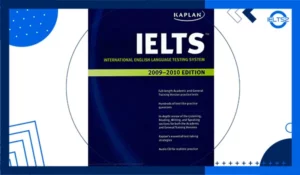نمونه سوالات اسپیکینگ آیلتس درباره پلاستیک (پارت 1 2 3)
در این بخش بیش از 20 مورد از نمونه سوالات اسپیکینگ آیلتس نمره 9 درباره “موضوع بلایای طبیعی” را با هم میبینیم. این مجموعه از آخرین سوالات گزارش شده از سنترهای برگزار کننده آیلتس در ایران و خارج از کشور مربوط به پارت 1، 2 و 3 می باشند و شانس تکرار آن ها در آینده بالاست. در ادامه مطلب همچنین نکات گرامری، لغات و دلایل دریافت نمره 9 را به طور مشخص توضیح داده ایم تا راهنمایی برای علاقمندان باشد. 1000 نمونه سوالات اسپیکینگ آیلتس با جواب PDF پارت 1 2 3 پیشنهاد بعدی ما به شما عزیزان است.
نمونه سوالات اسپیکینگ آیلتس درباره موضوع پلاستیک (پارت 1)
1. Do you use plastic products in your daily life?
Yes, I use plastic products daily, but I am mindful of the environmental impact. For instance, I use plastic containers for storing food and some household cleaning products that come in plastic bottles. However, I make a conscious effort to reduce plastic waste by reusing plastic bags and containers. Additionally, I try to choose products with minimal plastic packaging, such as those that are made from biodegradable or recyclable materials. Plastic is convenient, but I strive to minimize its impact on the environment.
2. What kind of plastic products do you use most often?
I mainly use plastic containers, water bottles, and bags. These products are incredibly convenient for daily use. For example, I use plastic containers to store leftovers and groceries, and I carry a reusable plastic water bottle to stay hydrated. Despite their practicality, I’m aware that plastic can take hundreds of years to break down, so I always try to recycle plastic waste appropriately and avoid single-use plastics whenever possible.
3. Do you think plastic is harmful to the environment?
Yes, plastic is extremely harmful to the environment. Plastic takes hundreds of years to decompose, which means it accumulates in landfills and pollutes oceans, harming wildlife. Animals often mistake plastic waste for food, leading to injury or death. Moreover, the production of plastic involves the use of non-renewable resources, which contributes to environmental degradation. Given these negative impacts, it’s crucial to reduce plastic use and seek sustainable alternatives to protect the planet.
4. Do you recycle plastic?
Yes, I make sure to recycle plastic whenever possible. Most of the plastic items I use, such as bottles and containers, are recyclable. In my home, we have separate bins for recyclable materials, and I ensure that the plastics are clean and free from food residues before placing them in the recycling bin. Recycling helps reduce plastic waste, conserves natural resources, and decreases the environmental impact of plastic production and disposal.
5. How do you feel about the overuse of plastic in society?
I believe that the overuse of plastic in society is a serious issue that needs to be addressed. Plastic is used excessively in packaging, consumer products, and single-use items like straws and cutlery. The convenience of plastic is undeniable, but its environmental toll is immense. We need to shift towards more sustainable materials and promote the use of alternatives, such as paper, glass, and biodegradable plastics. Encouraging individuals and companies to reduce plastic consumption is vital for a healthier planet.
6. Do you think plastic can be replaced by other materials?
Yes, I believe plastic can be replaced by other materials, but it will require innovation and investment. For instance, biodegradable plastics, which break down naturally, can replace conventional plastic for many applications. Glass and metal can also be used for packaging, as they are durable and recyclable. Although transitioning away from plastic will take time, technological advancements and increased public awareness about environmental issues can help make this shift possible.
7. What are some alternatives to plastic?
There are several alternatives to plastic, such as biodegradable plastics, paper, glass, and metal. Biodegradable plastics are made from natural materials like cornstarch and can decompose much faster than traditional plastics. Paper and glass are excellent alternatives for packaging, and metal containers are often used as a more sustainable option for drink cans. Additionally, reusable bags, made from fabric or other sustainable materials, can replace plastic bags. These alternatives help reduce plastic waste and its harmful effects on the environment.
8. Do you think people are aware of the environmental impact of plastic?
Yes, I think there is increasing awareness about the environmental impact of plastic. In recent years, people have become more conscious of plastic waste, especially its impact on marine life. Many organizations and governments have launched campaigns to reduce plastic consumption and promote recycling. However, while awareness is growing, more needs to be done to educate the public and encourage widespread adoption of sustainable practices. It’s crucial for everyone to understand the long-term effects of plastic pollution and take action accordingly.
9. Do you think plastic bags should be banned?
Yes, I believe plastic bags should be banned. They are one of the most common types of plastic waste, and they often end up in our oceans, where they pose a threat to marine life. Many countries have already implemented plastic bag bans, and these initiatives have led to a noticeable reduction in plastic waste. People can easily switch to reusable fabric bags, which are durable and eco-friendly. Banning plastic bags would be a positive step towards reducing plastic pollution.
10. What is the government’s role in reducing plastic waste?
Governments play a crucial role in reducing plastic waste by implementing policies and regulations that promote sustainability. This can include banning single-use plastics, encouraging recycling, and supporting the development of eco-friendly alternatives. Governments can also invest in public education campaigns to raise awareness about the importance of reducing plastic consumption. Additionally, they can impose taxes on plastic products to incentivize companies to adopt sustainable practices and help create a greener future.
نمونه سوالات اسپیکینگ آیلتس درباره موضوع پلاستیک (پارت 2)
Describe a time when you used a plastic product. You should say:
What the product was
Why you used it
How often you use it
And explain your opinion about plastic products
Band 9 Answer:
One of the most common plastic products I use regularly is a plastic water bottle. I always carry a reusable water bottle with me throughout the day, as it helps me stay hydrated and reduces the need for disposable plastic bottles. I initially started using a plastic water bottle because it was convenient and lightweight, making it easy to carry around.
I use the bottle multiple times a day, especially when I’m out and about. It’s a practical solution for staying hydrated, whether I’m at work, running errands, or exercising. I’ve also noticed that using a reusable water bottle significantly reduces the amount of single-use plastic bottles I would have used otherwise. I believe that small changes like this can have a meaningful impact on reducing plastic waste in the environment.
In terms of my opinion about plastic products, I understand their convenience, but I am also aware of the environmental concerns associated with their use. Plastic takes hundreds of years to decompose, and it contributes to pollution and harm to wildlife. Therefore, I try to make informed choices about my plastic use. For instance, while I still use plastic bottles, I ensure they are reusable, and I avoid buying single-use plastic items whenever possible. I also make an effort to recycle the plastic I do use to minimize its environmental impact.
Ultimately, plastic products are deeply ingrained in modern life, but I believe that with conscious effort, we can reduce their negative effects by opting for sustainable alternatives wherever possible.
نمونه سوالات اسپیکینگ آیلتس درباره موضوع پلاستیک (پارت 3)
1. Why do people use plastic products?
People use plastic products because they are affordable, lightweight, and versatile. Plastic can be molded into various shapes and is durable, making it suitable for a wide range of products, from packaging to household items. Additionally, plastic is often used for single-use items because it is cheap to produce and dispose of. However, the ease and convenience of plastic have led to overconsumption, which is problematic for the environment. With increasing awareness of its harmful effects, there is a growing shift towards finding more sustainable alternatives to plastic, especially in areas like packaging and disposable items.
2. Can plastic be recycled effectively?
Yes, plastic can be recycled effectively, but not all types of plastic are recyclable in the same way. Some plastics, like PET and HDPE, are easier to recycle due to their stable chemical properties. However, other plastics, such as PVC or multi-layered packaging, are more difficult and costly to recycle. Even though recycling rates for plastic have increased, many regions still lack the proper infrastructure, meaning a significant amount of plastic waste ends up in landfills or oceans. To improve recycling, it’s essential for people to separate plastics by type and for companies to adopt packaging that is easier to recycle.
3. How does plastic pollution affect marine life?
Plastic pollution is a major threat to marine life. Sea creatures, from small fish to large mammals, often mistake plastic debris for food, leading to choking, internal injuries, or death. Marine animals can also become entangled in larger pieces of plastic, restricting their movement or suffocating them. Moreover, as plastic degrades, it breaks into smaller particles known as microplastics, which infiltrate the marine food chain. These microplastics are consumed by marine organisms and can eventually reach humans. The accumulation of plastic in oceans disrupts ecosystems, endangering biodiversity and posing long-term environmental risks.
4. Should plastic packaging be banned?
Banning plastic packaging entirely is a complex issue. While plastic packaging is convenient and inexpensive, it has a significant environmental impact, contributing to pollution and waste. Many countries have already started regulating the use of plastic packaging by encouraging the use of sustainable alternatives such as biodegradable plastics, paper, or glass. While a complete ban may not be practical, it’s important to promote the reduction of plastic packaging and encourage companies to adopt eco-friendly packaging. Governments should offer incentives for innovation in packaging materials that are both sustainable and efficient to meet consumer needs.
5. Do you think the government should regulate plastic production?
Yes, I believe that government regulation is essential to curb plastic production. Governments should impose stricter regulations on plastic manufacturers, especially for single-use plastics. These regulations can include setting limits on plastic production, encouraging the use of biodegradable alternatives, and promoting recycling programs. Governments can also impose taxes or fees on plastic products to incentivize businesses to seek sustainable alternatives. By providing financial support for innovation in sustainable materials and encouraging public awareness campaigns, governments can help reduce plastic consumption and drive positive environmental changes.
6. What are some alternatives to plastic?
There are various alternatives to plastic, such as biodegradable plastics, glass, metal, and paper. Biodegradable plastics, made from natural materials like cornstarch, break down more easily in the environment compared to traditional plastics. Glass and metal are also sustainable alternatives because they are recyclable and do not release harmful chemicals into the environment. Paper is a viable substitute for plastic packaging, though its production still involves environmental costs. Reusable bags, containers, and utensils made from sustainable materials can significantly reduce reliance on plastic and decrease waste.
7. How do plastic products impact the environment?
Plastic products have a substantial negative impact on the environment. Most plastics are non-biodegradable and can remain in landfills for hundreds of years, contributing to the growing waste problem. When plastic enters natural ecosystems, it pollutes land and water sources, harming wildlife and disrupting habitats. Microplastics, which break off from larger plastic items, are widespread in oceans, rivers, and soils, contaminating food chains and posing risks to human health. The production of plastic also consumes significant energy and non-renewable resources, exacerbating environmental degradation.
8. Can plastic be replaced by more sustainable materials?
Yes, plastic can be replaced by more sustainable materials, but it requires innovation and investment. For instance, biodegradable plastics derived from natural sources like cornstarch can replace traditional plastics in many applications. Materials such as glass, metal, and paper are often used as alternatives for packaging, though they come with their own environmental considerations. The rise of plant-based plastics and innovations in materials science may offer even more promising alternatives. However, the challenge lies in balancing cost, efficiency, and sustainability to create viable alternatives that meet consumer demand and reduce environmental harm.
9. What are the benefits of reducing plastic usage?
Reducing plastic usage offers numerous environmental and economic benefits. First and foremost, it helps decrease pollution and protect ecosystems, particularly oceans, from plastic waste. Reducing plastic consumption can also reduce the burden on landfills and lower the overall environmental impact of plastic production. Furthermore, by adopting sustainable alternatives, companies can reduce their carbon footprint and contribute to a circular economy. On a societal level, decreasing plastic usage encourages more responsible consumer behavior and fosters innovation in eco-friendly materials, promoting a greener, more sustainable future for everyone.
10. Will plastic ever be completely eliminated?
It is unlikely that plastic will ever be completely eliminated, given its widespread use in industry and daily life. However, its use can certainly be reduced significantly. The focus should be on minimizing plastic waste, particularly single-use plastics, and promoting the recycling and reuse of plastic materials. Technological advancements in biodegradable plastics and other alternatives are promising, but these need to be scaled up to replace plastic on a global scale. While complete elimination may not be feasible, adopting more sustainable practices and reducing reliance on plastic is an achievable goal.
عوامل مؤثر در کسب نمره ۹ در پاسخها سوالات اسپیکینگ موضوع پلاستیک
این پاسخها به دلایل مختلفی نمره 9 را در آزمون اسپیکینگ آیلتس کسب میکنند. در اینجا عواملی که باعث میشوند این پاسخها در سطح نمره 9 قرار گیرند، بررسی میکنیم:
روانی و انسجام: پاسخها بهطور منطقی ساختاردهی شدهاند و هر یک دارای مقدمه، توسعه و نتیجهگیری واضح است. این پاسخها جریان طبیعی دارند و بهطور مستقیم به سوالات پاسخ میدهند.
گستردگی و دقت گرامری: در این پاسخها از ساختارهای جملات پیچیده بهطور مؤثر استفاده شده است. از جملات شرطی، جملات موصولی، ساختارهای مجهول و زمانهای مختلف بهطور صحیح استفاده شده است که تسلط بالا به گرامر را نشان میدهد.
منابع واژگانی: واژگان بهطور متنوع و دقیق انتخاب شدهاند. کلماتی مانند “biodegradable” (زیستتخریبپذیر)، “microplastics” (ریزپلاستیکها)، “sustainable” (پایدار)، “recyclable” (قابل بازیافت) و “non-biodegradable” (غیرزیستتخریبپذیر) بهدرستی برای انتقال مفاهیم خاص و پیچیده بهکار رفتهاند که نشاندهنده دامنه واژگانی وسیع است.
پاسخ به وظیفه: هر پاسخ بهطور کامل و دقیق به سوال پاسخ میدهد و توضیحات و مثالهای کافی برای توضیح ایدهها ارائه میدهد. این پاسخها بصیرت و تحلیل عمیقی از موضوعات دارند که نشاندهنده درک کامل مسئله است.
با استفاده از گرامر پیشرفته، دامنه واژگانی گسترده و پاسخهای ساختارمند، این پاسخها ویژگیهای لازم برای کسب نمره 9 در آزمون اسپیکینگ آیلتس را نشان میدهند.
مطالبی برای مطالعه بیشتر
تهدید پلاستیک برای محیط زیست (رایتینگ آیلتس جنرال تسک 2)
رایتینگ آیلتس جراحی پلاستیک (نمونه Band 9)
اسپیکینگ آیلتس محیط زیست (پاسخ نمره 9)
تعیین سطح رایگان اسپیکینگ ❤️
نمونه سوالات اسپیکینگ آیلتس درباره “موضوع پلاستیک” پارت 1 2 3 را به همراه سمپل های نمره 9 آن ها با هم دیدیم. در ادامه نمونه سوالات دسته بندی شده اسپیکینگ آیلتس پیشنهاد آخر ما به دوستان گرامی هست. این نمونه سوالات اسپکینگ از پرتکرار ترین تاپیک های این بخش و همچنین جدیدترین موضوعات می باشند. این مجموعه توسط یکی از سایت های معتبر و فعال آیلتس تنظیم شده است. همچنین برای تعیین سطح و تعیین رایگان نمره اسپیکینگ و دریافت جدید ترین سمپل های نمره 9 در کانال تلگرام اسپیکینگ ما همراه باشید و به ادمین برای تعیین نمره اطلاع دهید.




